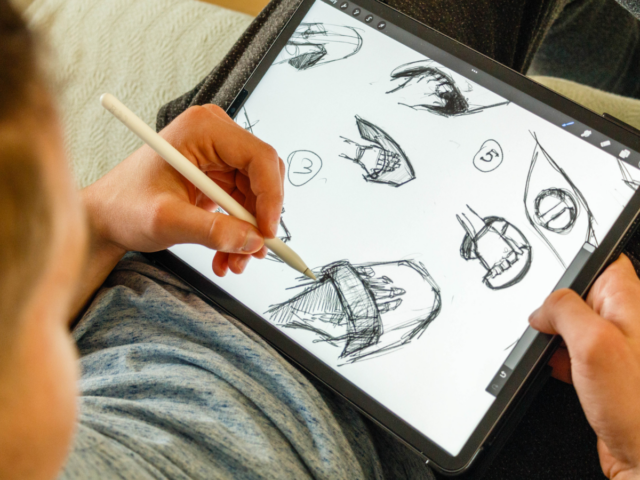Lately, I’ve been catching myself in a ridiculous scrolling loop. You know the one. You’re “just checking” something on your phone and suddenly it’s 45 minutes later, and all you’ve accomplished is learning what a stranger had for brunch and getting mildly annoyed by internet debates. Then I end up feeling guilty about all the things I could’ve done instead. I could’ve gone for a walk, called a friend, read a book, or—hear me out—actually rested instead of frying my brain on meaningless content. And personally, I find that excessive screen time isn’t just a time-waster; it chips away at your mental well-being without you even noticing.
The thing is, going completely screen-free isn’t realistic, especially in today’s digital age where everything from work to socializing happens on digital platforms. So, rather than attempting a full-blown digital detox and failing by lunchtime, I’ve found that the key to avoiding the negative effects of screens isn’t about unplugging entirely. It’s about being smart with your screen use. If you do it right, screens don’t have to be the enemy. In fact, they can actually improve your mental health. (I know, I didn’t believe it either, but stick with me.)

Screens Aren’t All Bad (If You Use Them Right)
Social media platforms, video games, and even digital work tools can help you achieve genuine social interactions and personal growth opportunities. Yeah, I said it. Playing a cooperative game with friends or hopping on a group call can foster real social connections. Of course, we’re not talking about doomscrolling through random internet drama for hours. That’s a one-way ticket to low self-esteem and depressive symptoms.
But with the right mindset and boundaries, screen time can actually lead to significant improvements in things like cognitive function and social skills. Ever been part of an online community that made you feel genuinely understood? That’s the magic of using digital platforms the right way.

Setting Screen Time Boundaries
One of the best ways to avoid the adverse effects of too much screen time is to set, and stick to, clear boundaries. This isn’t revolutionary advice, but it works. Personally, I’ve found that establishing screen-free zones in my home—like the dining table or my bed—makes a huge difference in my sleep patterns and overall mental health. When you’re not glued to a screen right before bed, you avoid the dreaded blue light effect that messes with your ability to fall asleep.
Is there a particular platform that’s consuming all your free time? You may want to cut out scrolling on it entirely. I’ve had success with limiting myself to JUST messaging on specific apps. If you decide to do this, you’ll likely find that it’s still nearly impossible to avoid consuming so much content, just based on what people send you on a daily basis. It’s literally become a form of modern communication! So you may have to set further boundaries by asking people to limit the content they’re sending you.
If going full-on screen-free feels impossible (and, let’s be honest, it probably does), try taking regular breaks throughout the day. Even five minutes of standing up, stretching, and staring at something that isn’t glowing can reset your brain. Bonus points if you do some physical activity.

Active vs. Passive Screen Time
It’s easy to lump all screen use into the same “bad for you” category, but not all screen time is created equal. The real determining factor is whether that time is active or passive. Active screen time involves doing something purposeful—like creating digital art, writing, learning a new skill, or collaborating on a project. Passive screen time, on the other hand, looks more like endlessly scrolling through memes, binging random YouTube videos, or playing the same level of a mindless game over and over. Spoiler: one of these is a whole lot better for your brain.
A recent study found that when kids engaged in active screen time (think educational apps, creative software, or online research), they experienced fewer detrimental effects compared to those who spent hours consuming passive content. This aligns with previous research showing that children using screens for interactive and cognitive activities tend to have better academic performance, stronger cognitive development, and even improved mental health outcomes.
It’s the difference between using a screen to create versus consume. When you’re creating, your brain is actively working—problem-solving, imagining, thinking critically. But consuming passively is linked to an increase in the likelihood of developing low self-esteem, mental health challenges, and poor sleep quality.

Ways to Limit Screen Time
Mindful screen use isn’t about quitting cold turkey, but about taking control. Instead of letting hours slip away while scrolling aimlessly, you can engage with digital devices in ways that actually benefit your brain, mood, and mental well-being. The key is to shift from mindless consumption to meaningful engagement, and to swap some of that screen time for healthier habits. Here’s how:
Make a List
Let’s be real. Half the time we reach for our phones, it’s not because we actually need them. It’s because there’s a lull in the day, and we don’t know what else to do. That’s where a pre-prepared list comes in. Write down a handful of things you could or should be doing that might be more productive or fulfilling. Keep it somewhere handy—on your desk, the fridge, or even in your notes app—and reach for it when you feel the urge to mindlessly scroll. Your list could include anything from tasks you’ve been procrastinating on to simple pleasures, like reading a chapter of a book, watering your plants, or calling a friend.
- Why it works: Having a go-to list of screen-free activities helps break the autopilot habit of reaching for your phone. Instead of defaulting to passive consumption, you’re reminded that there are better, more satisfying options available.
Swap Passive Scrolling for Creative Tasks
Instead of zoning out on social media platforms, try spending your screen time on activities that get your brain involved. Digital drawing, writing, or even learning a new skill through an app turns your screen into a tool for personal growth, rather than a source of low self-esteem or comparison.
- Why it works: Creative tasks boost cognitive development, improve mental health outcomes, and leave you feeling more accomplished than a random TikTok binge.
Replace Screen Time with Physical Activities
There’s nothing wrong with a little entertainment, but too much screen time often means less movement, and that’s where the negative effects can creep in. Next time you catch yourself glued to a screen for no real reason, step away and get moving. Go for a walk, stretch, or try a quick home workout.
- Why it works: Physical activities improve sleep patterns, reduce stress, and combat the sedentary lifestyle that often comes with high screen time. Even light movement can help reset your brain and make you feel better.
Create Screen-Free Zones
Designate areas in your home where screens are off-limits, like your dining table or bedroom. This encourages more face-to-face interactions with family members and helps you wind down properly before bed.
- Why it works: Keeping screens out of certain spaces improves sleep quality (hello, no blue light before bed) and enhances your social connections by encouraging more in-person interaction.
Prioritize Important Activities First
Before diving into your favorite show or game, knock out your top tasks for the day. Whether it’s schoolwork, meal prep, or a quick cleaning session, getting those out of the way first means you’ll enjoy your screen time without the nagging feeling of procrastination.
- Why it works: Prioritizing important activities ensures you’re spending your energy on what matters most, which helps reduce anxiety and boosts your sense of accomplishment.
Engage in Screen-Free Leisure Activities
Screens aren’t the only way to relax. Try adding some screen-free activities to your routine, like reading, playing board games, or picking up a hobby that doesn’t involve a glowing rectangle.
- Why it works: Diversifying your leisure time reduces social isolation and the potential mental health challenges linked to too much screen time. Plus, doing something tactile or creative feels refreshing after staring at a screen all day.

Life Among the Screens
We have to accept that screens aren’t going anywhere. In today’s digital age, they’re as much a part of life as coffee and complaining about Wi-Fi speeds. But by being intentional about how we engage with digital devices, we can avoid the negative effects while reaping the benefits.
Now if you’ll excuse me, I’m off to test my “strategic screen use” theory by logging off for an hour. Or ten minutes. Baby steps, okay?
Have you had any success in reeling in your screen time? Any tips to share? We’d love to hear them, so comment below, and then be sure to go relax without your phone nearby!





Wow, I’m excited just for the chance.
Nothing beats homemade ice cream! Thx for chance!
Who doesn’t need ice-cream?
Still not getting captcha option to enter contests.
Hi Jason,
Sorry you are having issues with the captcha.
We have checked on our end and the captcha seem to be working correctly! If you can take a screenshot of what you are experiencing and email us at giveaways@steamykitchen.com we can make sure you are receiving your entries!
Thank you
Steamy Kitchen Giveaways Team